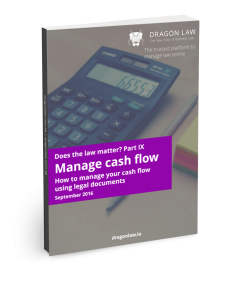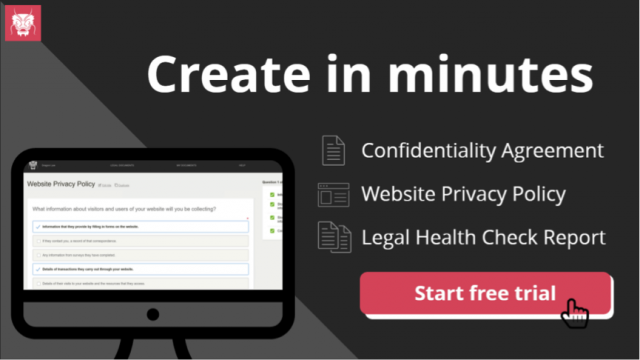For small business owners, a regular flow of income is essential to sustainably keep your business functioning. Most will suffer from cash flow problems on occasion but unfortunately, it is thought that 80% of new small businesses that fail, do so because of cash flow problems.
The good news is that most problems can be avoided with some preparation and a management strategy in place. So having agreed your startup loan or grant and launched your new venture, how do you ensure that your business bank account stays in good shape?

What exactly is cash flow?
Put simply it is the money that is moving in and out of your business bank account every month. You might feel, especially at the beginning, that the money is only flowing one way, but eventually you should also be receiving revenue too! Money comes in from your customers who are buying your products or services but you will also have cash going out for things like rent, loan repayments and cost of goods.
How important is cash flow?
Your business is sustainable if you are enjoying a ‘positive cash flow’ situation. If more funds are flowing out than are coming in then your business will simply run out of money. With no cash reserves, you won’t be able to pay the bills and your business could fold.
One simple bad debt coupled with other factors such as high overheads and poor margins may ultimately determine whether your business survives or not. Cash flow problems can very quickly lead to a serious situation.
RELATED READING: Company Credit Cards vs. Corporate Expense Cards
What factors adversely affect Cash Flow and what can I do about it?
The most common cash flow problems are caused by slow paying invoices, high overheads, insufficient margins, excess inventory and bad debts. So what causes these issues and how can you avoid or solve the problems?
Slow Paying Invoices
As a small business, you will be usually offer 30-day to 60-day payment terms to clients. However waiting this long for payments can create financial difficulties especially if the debt remains unpaid beyond the 60 days.
To avoid future problems, it is advisable to formally enter into a Sale of Goods Agreement. This a contract which defines the responsibilities of the buyer and the seller and establishes the terms on which a seller transfers goods to a buyer. The agreement also sets out the exact nature of the goods, as well as price and payment terms and what happens at the end of the contract.
In this agreement, you are able to set out deadlines for payments and penalties for late payments. You can clearly state that there will be interest payable on outstanding debts. You may also consider offering incentives for prompt payment such as a 3% discount for invoices paid within 10 days.
High Overhead Costs
Your overhead costs are not directly related to the goods you are selling or the service you are providing. Rather they are costs incurred to run your business day to day such as loan repayment, rent and utilities. If your overheads are too high then your business’s cash flow can be adversely affected. Unfortunately such costs may be necessary. They are also continual and need paying every month!
In order to remedy this, you should continually be reviewing the cost of your overheads and making cutbacks where possible. Consider changing your service providers to get a better deal but always be mindful of making cuts that could directly affect your ability to grow your business. Audit your expenses regularly and always consider a cheaper option!
Related reading: 6 simple ways to cut business costs
Insufficient Margins
The goal of any business is ultimately to turn a profit. However, in a highly competitive market and in a bid to secure more sales, business owners often price themselves too low. This can result in very small or even negative gross margins.
To make sure you are priced correctly, have a clear understanding of your ‘all-inclusive’ cost of delivering your product or service. Don’t miss anything out! If your margins are too weak then consider raising your prices. You could also drop products or services that have weak margins and focus on those with higher returns.
Excess Inventory
If you have a warehouse brimming with stock then your cash is tied up and completely static. This can occur when you are not adequately forecasting and you have over-purchased stock.
Audit your inventory so that you only keep stock for the shortest amount of time possible before it is sold. Always remember though to have key items in stock at all times. You may lose customers if a popular product is not available to purchase and they have to go elsewhere. Modify your forecasting to ensure accuracy. Take into account past volume, season and supplier capabilities. Use historical data to track trends and make predictions. Make sure your forecasts are realistic, not optimistic. If you are a new business with not much historical data, ask a mentor who is an expert in your industry for advice.
Overload of Bad Debt
Bad debts occur when you have supplied goods or services but the customer simply doesn’t pay. Longstanding bad debts can obviously damage your cash flow and ultimately your profitability. Recovering bad debts might be a difficult process but it is definitely one that should not be ignored!
Collecting your debts can be especially difficult for a small business. Without huge financial flexibility you have less bargaining power. Consider implementing a strategy to avoid this situation in the first place. It may be worthwhile looking at your payment terms and only giving extended terms to clients with good credit and who have a proven track record of payment. Clients who present a ‘credit risk’ may fall by the wayside but you are probably better off without them!
If you are in a situation with a number of bad debts then you need to have a structured credit control process in place. This will save time spent on chasing invoices and maximise your chances of recovering the debt.
Implementing a Credit Control Process
Speak to the debtor
Try to understand why the payment is late – is this a first time debtor or is this someone who regularly doesn’t make their payments on time? This alone might be enough to recover the debt. It may be they are also suffering a cash flow problem but you are next on the list to be paid. Ask for a date in the near future that it will be paid and if not you can continue your process.
Send a First Payment Reminder Letter
Above is a first payment reminder letter template provided by Zegal. This is a short friendly reminder to repay an outstanding debt from a customer. It is an affable communication that when presented correctly will retain customer goodwill while encouraging prompt payment.
Send a Second Payment Reminder Letter
If there is still no response then this can then be followed with a Second Payment Reminder Letter (see above template). This is similar to the first but the tone can be more direct. The letter should include details regarding the amount of debt outstanding and the original due date. It should also state the interest that has been applied and what further action will be taken if it is not paid.
Send a Final Payment Reminder Letter
A Final Payment Reminder Letter is issued after the first two letters (template above). It is a short, clear demand to repay the outstanding debt. The details will be the same as in the previous letters but should also state that legal action will be taken if the debt is not paid by a particular date.
Accepting Payment in Instalments
After these steps have been taken you will hopefully receive an offer by a debtor to pay off their debt in regular fixed amounts. A Letter Accepting Payment in Instalments (see link for template above) is a concise letter that accepts the proposed debt repayments from a debtor. It will include details on how much the instalment amounts are and the frequency and method of payment. This can prevent any potential legal disputes by setting out clear rules for the repayment of the debt. A Letter Accepting Payment in Instalments can reserve the right to take any legal action to recover outstanding debt. If the debtor fails to repay the debt on time, this letter can serve as evidence of the agreement.
With this credit control process you should be able to efficiently recover debts and improve your cash flow situation! If all else fails, you may need professional legal advice and even a debt collection lawyer or debt collection service.
FURTHER READING: The Modern CFO: Cash Flow and Managing Accounts Receivable
RELATED READING: 5 Must-Have Legal Documents for Cash Flow Optimisation
Some Final Thoughts
Keeping an eye on your cash flow can be tricky but it is crucial. When you are starting out, don’t engage in impulse spending. Create a realistic budget and stick to it. Consider the benefit versus cost of every single expense you make.
When you are up and running, use a cash flow statement to keep track your revenue and expenses This will help you plan ahead for hard times. You should also consider having a financial cushion equivalent to at least two months of operating expenses. That way, if you do enter a cash flow crisis you have a fallback in reserve.
Want more tips on how to ensure sound cash flow management for your business?
Check out our Manage Cash Flow eBook:

Zegal can help with all aspects of your credit control process:







